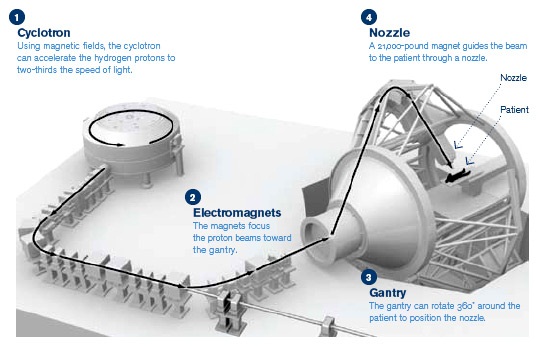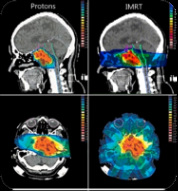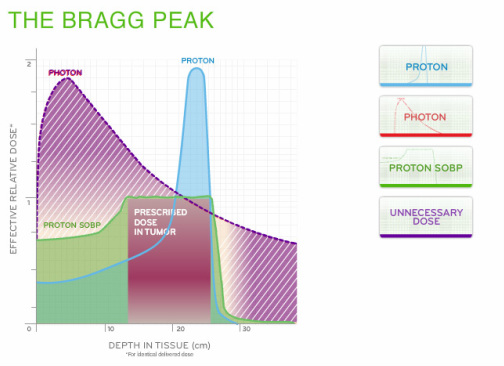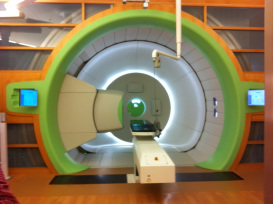|
Proton Radiotherapy works by depositing a precision dose of high energy radiation in the target tumor. The electronic interactions that occur in the patient damage the DNA of cancerous cells, and cause their destruction.
The advantage of proton therapy is that protons scatter less than other forms of x-ray radiation which ensures significantly less damage to the surrounding healthy tissue. In addition, the energy and acceleration of protons can be controlled so precisely that the maximum tumoricidal energy is released specifically within the cancer target. The physics of this proton phenomenon is known as the “Bragg Peak,” and the energy/speed modulation used so effectively in proton therapy to treat tumors of any shape and size, is known as the “Spread-Out Bragg Peak.” The combined effect of less scatter and increased precision allows us to target cancerous cells with a more potent dose of radiation while reducing radiation-related side effects. Proton therapy may be used in conjunction with other treatments. The treatment is non-invasive, painless, takes only minutes per day and can be conducted on an out-patient basis so the patients may carry on their normal daily activities. |
Image acknowledgments this page:
IBA-Proteusone The Proton Beam University of Pennsylvania Roberts Proton Therapy Center New York Times |
|
|




